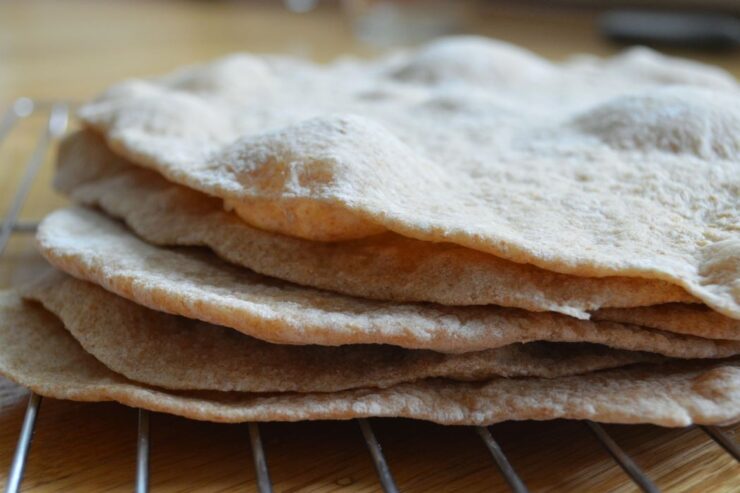Get acquainted with three kinds of bread that lie at the heart of many cultures across the Arab world.
The region known more popularly as the Middle East is home to many different countries and people. It houses a diverse range of cultures and religions, each of them bearing striking similarities as well as differences. However, breads of many textures, sizes and shapes have been made, served and eaten for thousands of years here. Despite differences within the region, bread lies at the very heart of every one of its culinary cultures.
1. Pita
Sources: Healthy Recipes and Veronica’s Cornucopia

The mother of all Arab breads and by far the most prevalent: the pita. Famous for its inner ‘pocket’ and wide range of uses, this soft round bread is known worldwide. Pita bread starts off as flattened rounds of dough that is then baked at very high temperatures, causing the dough to expand rapidly, separate in the middle and puff up dramatically like a balloon. The layers remain separated even as the pita bread is removed from the oven and left to cool and flatten.
Cut the bread in half to reveal the ‘pocket’ inside and try filling it with hot falafels, your favourite salads and strips of barbecued meat to turn it into a mouth-watering pita pocket sandwich. Pita bread and ice cream sandwich anyone? The soft and pliable pita is also used to pick up meat and vegetables and is perfect for tearing into small pieces and dipping into yoghurt spreads, hummus or tahini.
Get even more creative!
Why not turn your pita bread into a delicious pita pizza by throwing on some of your favourite pizza toppings, sticking it in the oven and wait for the cheese to melt? You can even use a stale pita to make your own pita chips by cutting the bread into triangles and baking it again. Pita chips make for a healthy and delectably crunchy alternative to potato chips and can be eaten with just about any spread or dip.
2. Lavash
Sources: Joe Pastry and I’m Not a Cook

Lavash, a very thin flatbread of Armenian origin, is widely consumed throughout the Arab world. Like pita bread, you can do just about anything with lavash! The bread is soft and flexible when fresh and can be served alongside kebabs, cut into small pieces and eaten with dips, or used to make sandwich wraps with various fillings such as herbs and cheese or shawarma.
Bake the dough for a longer period of time to make bread crackers, best enjoyed with hummus, or top your lavash with goat cheese, lamb, spinach, tomatoes and olive oil to get a Persian-style pizza.
The thin bread dries out quickly and becomes hard and brittle over time. However, unlike most breads, lavash can be used for long term storage and then easily rehydrated with a little steam to make it soft again.
3. Sangak
Sources: Turmeric and Saffron, I Live in a Frying Pan

Sangak, a wholewheat flatbread made from sourdough, is considered the national bread of Iran. What is special and unique about this bread is the way it is traditionally baked. Sangak, meaning ‘little stones’ in Persian, starts off as thin sheets of dough before it is baked on a bed of hot river stones in an oven. These stones shape the surface of the bread, giving the bread its trademark appearance. Sometimes the bread even comes out with small holes and some charred areas!
Sangak has a marvellous spongy texture and a hint of sourness. It is usually served warm, goes great with any cream or cheese and makes an amazing accompaniment to kebab. How about some thick yoghurt to go with your metre-long Iranian bread?
